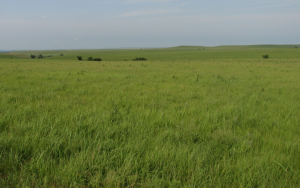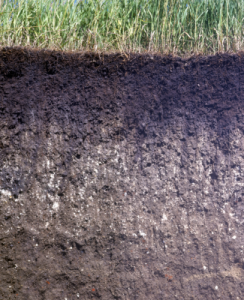
Grasses have evolved to withstand climate change. Besides doing great things for soil structure, grasslands are a reliable carbon sink. Stable organic matter is stored underground in the root zone of grasses. The dark, well-aggregated soils found in prairies contain massive amounts of stable carbon. The roots are renewed annually and humus is formed as they decay.

Due the billions of grass leaves covering the landscape, the collective leaf surface area of an acre of a grass sward is often greater than that of a forest canopy. Thus the capability to absorb carbon dioxide and release oxygen is incredibly high. Surface deposited leaf litter from either grasses or forests is decomposed aerobically and largely lost to the atmosphere as carbon dioxide.
For more information see:
https://climatechange.ucdavis.edu/news/grasslands-more-reliable-carbon-sink-than-trees/